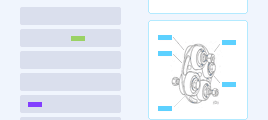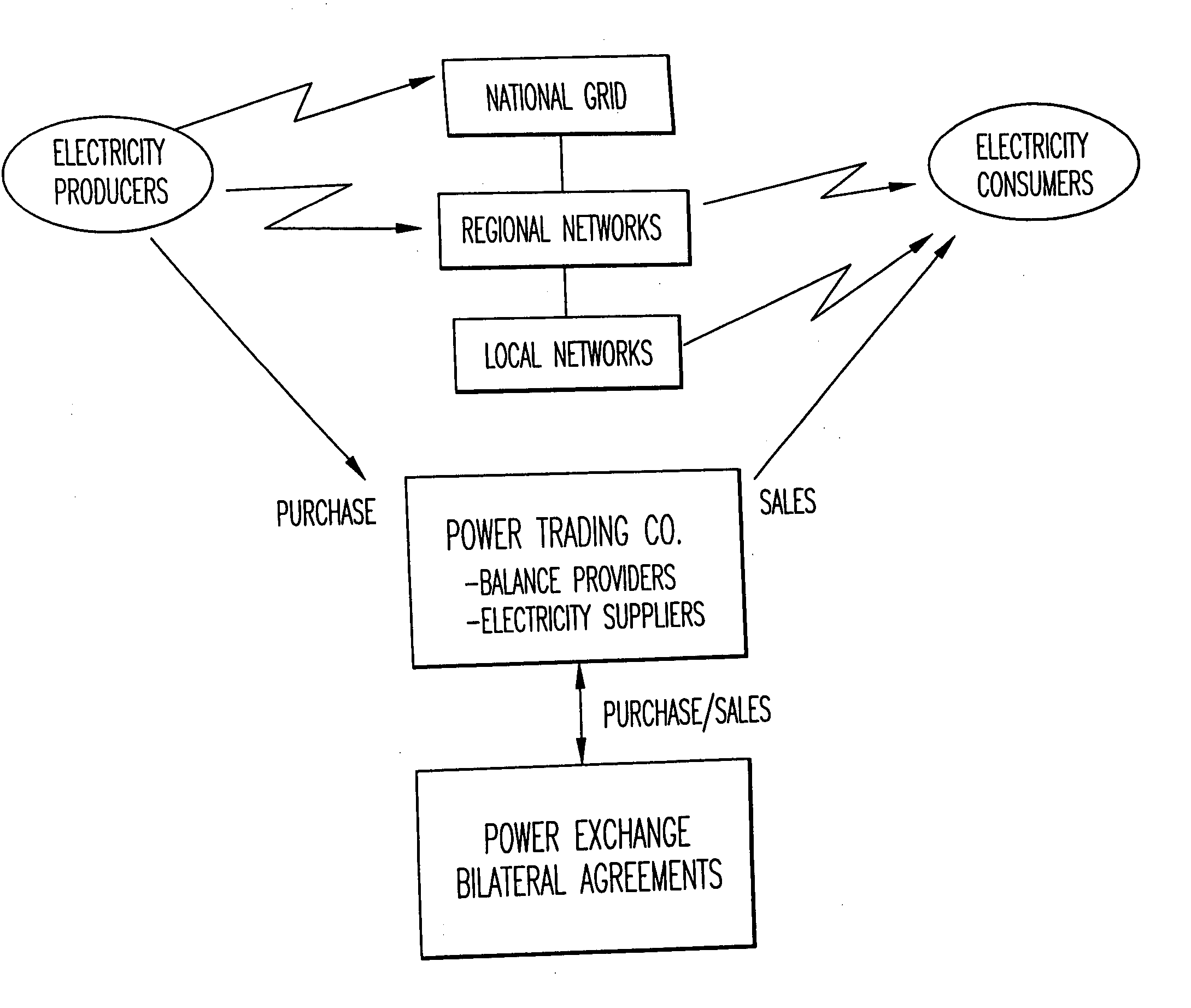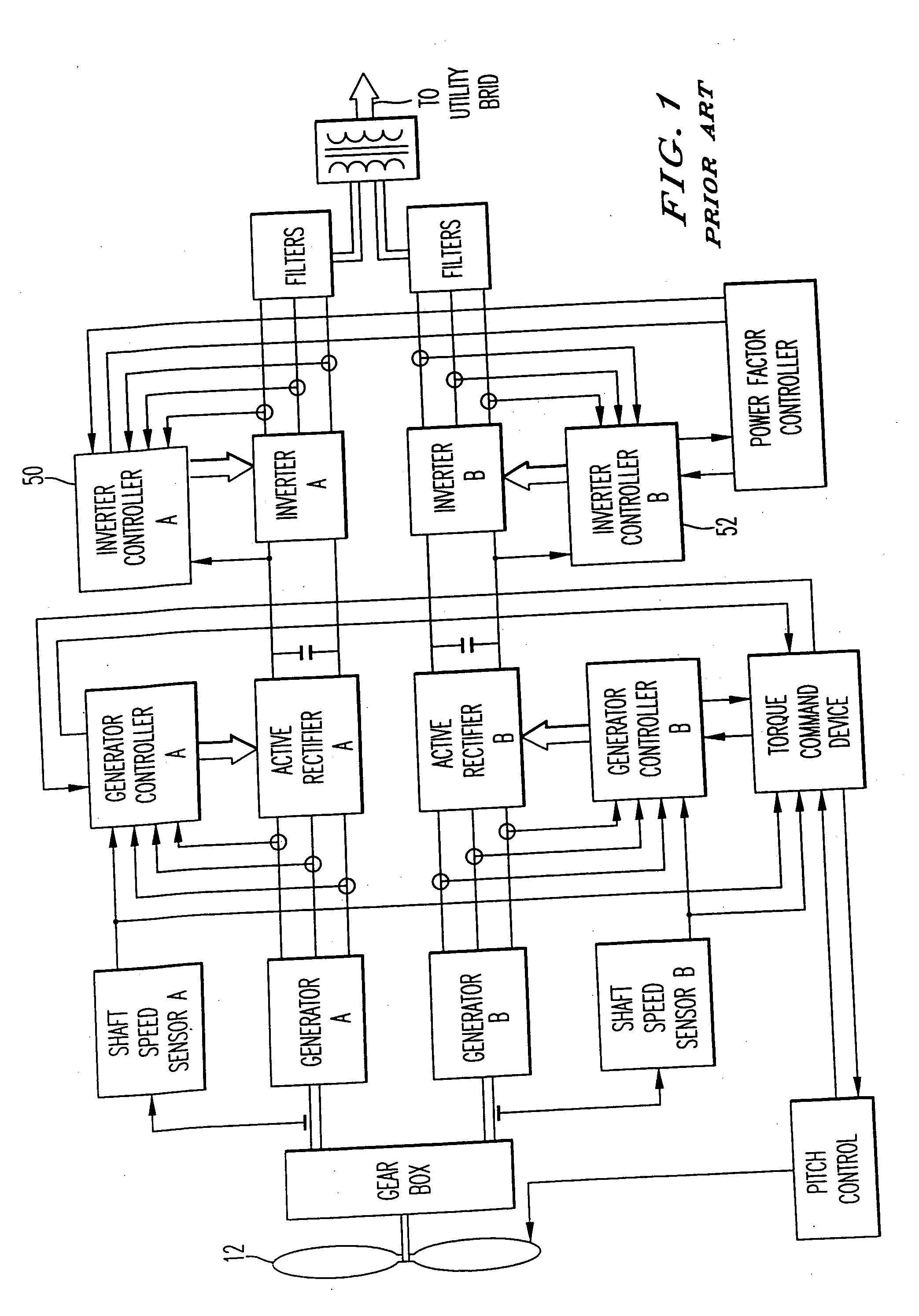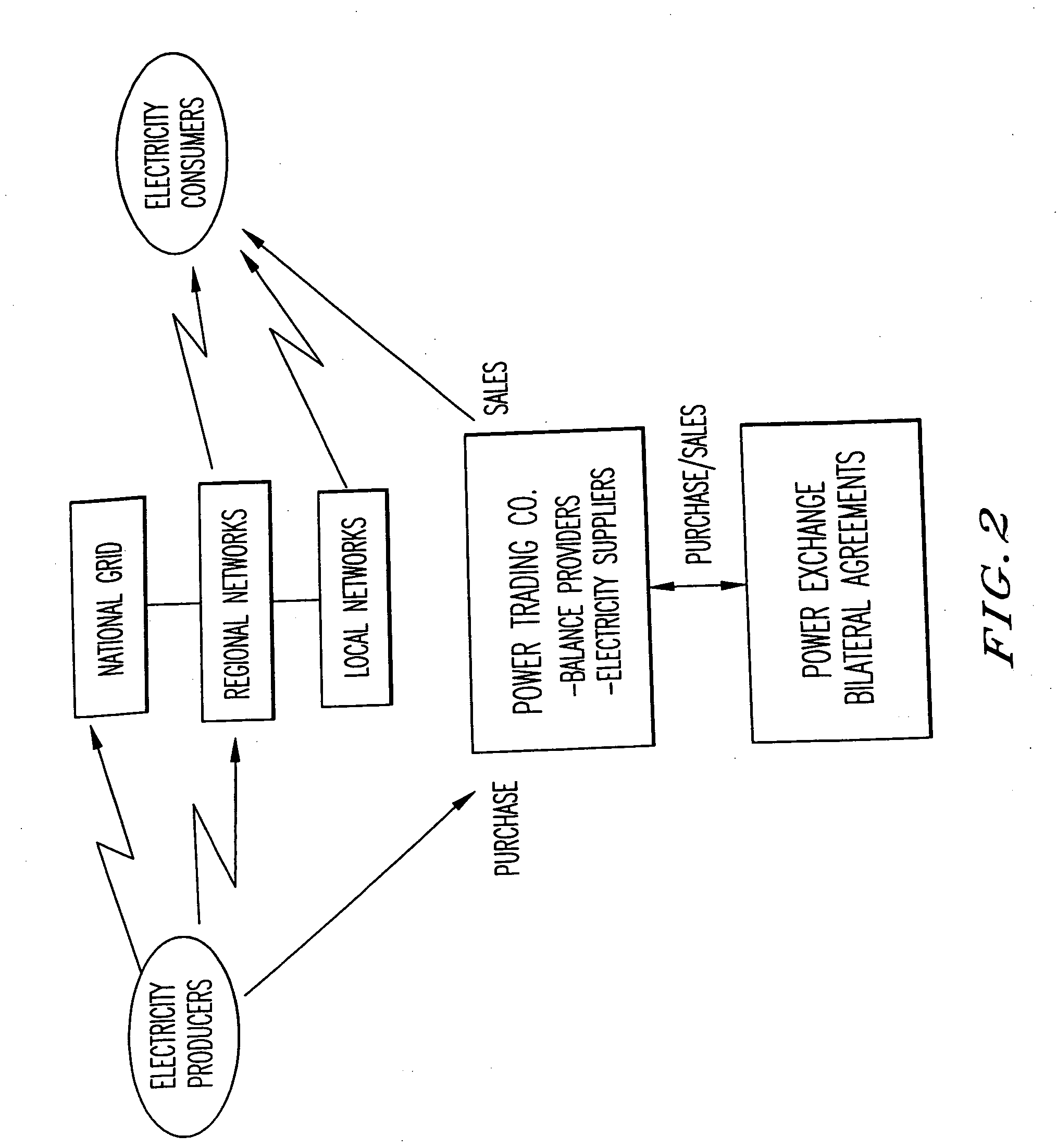On the other hand,
wind power is a variable (stochastic) power generation source, thus not offering power production facilities the type of control that the power production and grid facility would like to have in producing commercially reliable power.
These
wind power plants are today planned to grow slightly above three megawatts per unit, limited by a reliable size of the wind turbine, (the “
propeller”).
A perplexing task that has somewhat stifled the use of
wind power plants is that there has been no commercially viable way, in light of the price of fuel generated by other power plants, to effectively store
electricity generated by windmills during periods of peak production, so as to make up for periods when the wind slows.
As a consequence, the
capital cost, lack of
production control, size, and reliability problems limited the proliferation of such wind plants between the periods of 1890 and 1970.
As a consequence, the use of wind power declined sharply both with the spread of steam-engines and with the increase in scale of electrical power utilization.
Thus, windmills generally were only limited for small scale processes and were unable to compete with large scale steam powered electrical power facilities.
Furthermore, the commercial cost of such wind-generated power was much greater compared to those with generating systems based on
coal, oil, gas and hydro.
In a first typical
windmill power generation facility, an asynchronous
machine is used that acts as a generator but also inherently consumes reactive power from the AC grid.
However, as recognized by the present inventors, there is a risk with such systems, namely where the
capacitor bank causes the
system to become self-magnetized thus causing the frequency to differ by as much as tens of
hertz from the standard oscillation frequency after a fault occurs.
However, the use of this mechanical gearbox increases the cost by three to five times the cost of the generator, also having dramatic increases in the mean time between failure, and mean time to repair of the device, thus not making these designs commercially competitive with the more reliable and less costly
fossil fuel power production facilities.
However, as recognized by the present inventors, rotating electric machines, like generators and compensators, possess not only an ability to control reactive power, but also an overload capability which is superior to all types of
power electronics systems, especially PWM IGBT (
Insulated Gate Bipolar Transistor), with very limited overload capability.
However, as recognized by the present inventors, such devices have a very high cost per kWh compared to the sales price and are sometimes used at the
DC voltage link so as to balance power fluctuations as a result of wind gusts and wind lulls.
One of the problems with conventional wind power plants is that they do not possess this capability, thereby creating a potential
hazard for devices that are connected to the grid.
What is notable however, as recognized by the present inventors, is that
electricity from wind power, and the limitation within a wind-variable system, is not well suited with the current state-of-the-art systems for providing power to the power grid.
For example, the risk is high to a wind turbine provider for entering into a forward contract, given the stochastic nature of wind power, and thus the stochastic nature of a wind turbine as a power generation source, that could be expected to be generated by that provider at the time of delivery.
The inherent expense of such systems makes the opportunity to offer power during periods of low
wind speed very expensive since the wind power operator needs to purchase the physical assets for storing the electrical power.
As recognized by the present inventors, a limitation with conventional wind power systems is that unless there is some
physical media for storing the electrical power at the local generation facility, conventional systems cannot reliably perform in either the balance regulation or the longer term Nord
Pool exchange, due to variability of the wind power.
Lennart Soder states that this makes it in reality nearly impossible to trade wind power bids since the forecasts normally are too bad for this time.
Thus, wind power is generally recognized as a
environmentally friendly type of power, however not as commercially valuable or fungible as other types of
electricity such as that generated by fossil fuels.
 Login to View More
Login to View More  Login to View More
Login to View More 


